- News
- Reviews
- Bikes
- Components
- Bar tape & grips
- Bottom brackets
- Brake & gear cables
- Brake & STI levers
- Brake pads & spares
- Brakes
- Cassettes & freewheels
- Chains
- Chainsets & chainrings
- Derailleurs - front
- Derailleurs - rear
- Forks
- Gear levers & shifters
- Groupsets
- Handlebars & extensions
- Headsets
- Hubs
- Inner tubes
- Pedals
- Quick releases & skewers
- Saddles
- Seatposts
- Stems
- Wheels
- Tyres
- Tubeless valves
- Accessories
- Accessories - misc
- Computer mounts
- Bags
- Bar ends
- Bike bags & cases
- Bottle cages
- Bottles
- Cameras
- Car racks
- Child seats
- Computers
- Glasses
- GPS units
- Helmets
- Lights - front
- Lights - rear
- Lights - sets
- Locks
- Mirrors
- Mudguards
- Racks
- Pumps & CO2 inflators
- Puncture kits
- Reflectives
- Smart watches
- Stands and racks
- Trailers
- Clothing
- Health, fitness and nutrition
- Tools and workshop
- Miscellaneous
- Buyers Guides
- Features
- Forum
- Recommends
- Podcast
news
"I wouldn't want to catch that": Tour de France pro relieves himself into empty water bottle, lobs it into field; New Transport Secretary gets to work; A 136km 'rest day' ride; Philipsen wins; Cycle lane flowers; Giro action + more on the live blog
SUMMARY
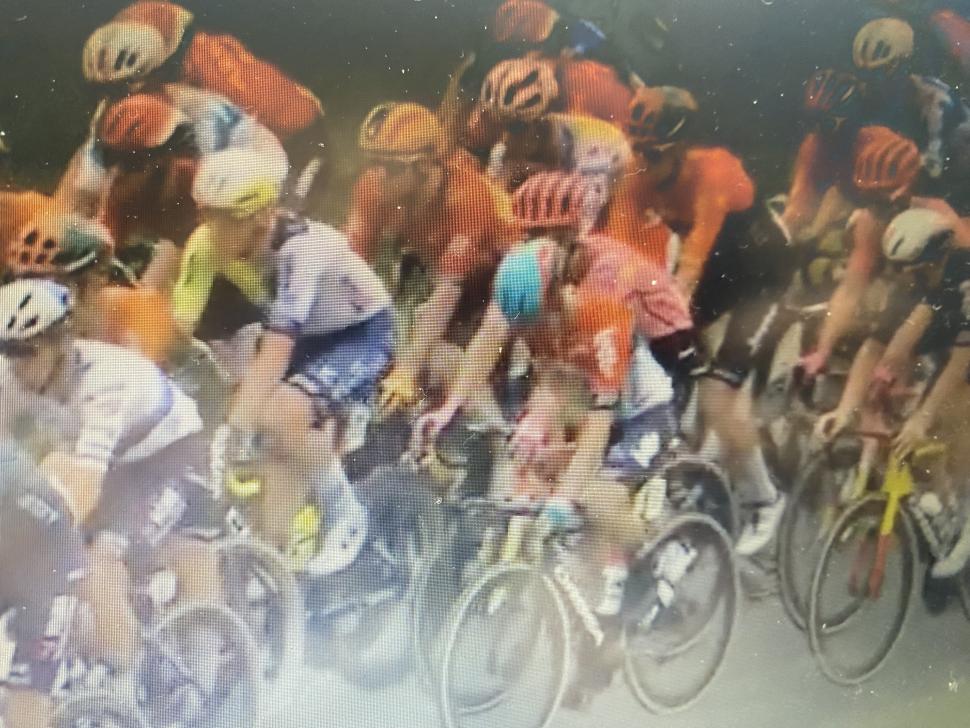 Victor Campenaerts relieves himself into water bottle (ITV)
Victor Campenaerts relieves himself into water bottle (ITV)09 July 2024, 16:07
"I wouldn't want to catch that": Tour de France pro relieves himself into empty water bottle, lobs it into field
An eagle-eyed viewer spotted the moment Lotto Dstny's Victor Campenaerts was caught on camera relieving himself into a empty bidon (later dubbed a 'pee-don' by road.cc Jo) before mercifully waiting for the crowds to pass before lobbing it, and the included fluid, into a field. All without losing position in the peloton. Thoughts and prayers to whichever fan comes across that 'souvenir' in the bushes later.
The eagle-eyed viewer who saw the incident unfold during today's tenth stage of the Tour de France actually happened to be Campenaerts' Lotto Dstny teammate Mieke Docx, who uploaded the video to Twitter before, well, it was deleted shortly after...
The Belgian was seen clutching something in his right hand down towards his saddle, before moments later it became clear exactly what said item was, a water bottle without a lid raised upwards towards his bars. For some reason it then appeared Campenaerts showed it in the direction of the EF Education-EasyPost rider to his side, and then threw it away to his left.
Belgian champion Arnaud De Lie was on Campenaerts' wheel and seemed to enjoy the performance, but not as much as the roadside spectators who stayed dry thanks to the Lotto Dstny classics man thankfully holding on for a few seconds before ejecting the repurposed bidon into the French countryside. How the UCI and their 'damaging the image of the sport' fines view the incident may well be slightly different to the widespread amusement it caused on social media.
In the absence of the video, here are the grainiest of grainy TV pictures.
As well as a lovely before and after...
If you thought that was bad, don't look up what British cycling legend Tom Simpson apparently used a casquette for back in the day...(if the anecdotes are true)...
09 July 2024, 17:29
Anti-cycling campaigners "spreading misinformation" say councillors, after "factually incorrect and negative" rumours that trees are set to be cut down for new cycle lane quashed
09 July 2024, 15:47
"Like 2023 all over again": Jasper Philipsen launched to Tour de France sprint victory by imperious Mathieu van der Poel lead out
Me waking up after seeing Philipsen win today’s stage #TDF2024 pic.twitter.com/8kgyDLhl8M
— Cycling Memes (@Cycling_Memes1) July 9, 2024
By no means a classic Tour de France stage, but you'll get no complaints here, we're firmly in the 'it's all part of a three-week Grand Tour' camp, not every day has to be stage nine. It really was all about the sprint, Jasper Philipsen starting the second week by getting on the board with his first stage win of this year's race, a victory massively assisted by the monstrous Mathieu van der Poel leadout that had been missing in week one.
Alpecin-Deceuninck finally get it right and deliver Jasper Philipsen for his first Tour stage victory of 2024! 🇧🇪🚀#TDF2024 pic.twitter.com/ZVVKam3B9G
— ITV Cycling (@itvcycling) July 9, 2024
"Maybe we didn't start in our very best shape but I'm really happy we can start the second week with a win," Philipsen said immediately afterwards, the Alpecin-Deceuninck sprinter who won four times at last year's Tour noting that there are also some "nice stages" to come, suggesting he's not done with one. Stages 12,13 and 16 should all be sprints, but with no Paris finale, and a brutal final week, there will be nothing for the fast men after Tuesday of next week.
With Van der Poel and Alpecin-Deceuninck seemingly back to near their lead-out best, it would take a brave (or foolish) person to bet against Philipsen adding to his tally.
We shouldn't move on without mentioning that there were more concerns about Philipsen's sprinting, this time at the intermediate sprint, and more allegations of deviating from his line coming days after he'd been relegated for cutting off Wout van Aert.
Philipsen "I’ll have to be more aware of my movements during such a final sprint."
Also Philipsen the next sprint
* closes again a riders on the barriers * pic.twitter.com/GZQlx4JGTz
— La Flamme Rouge (@laflammerouge16) July 9, 2024
There could be no complaints with what followed at the finish.
09 July 2024, 13:19
Niamh Fisher-Black wins Giro d'Italia Women summit finish
The shallow gradients meant that, as predicted, the time gaps weren't too significant on stage three of the Giro, SD Worx pulling off a 1-2 and setting up Niamh Fisher-Black for victory before Lotte Kopecky kicked for second. Elisa Longo Borghini came fourth and keeps the maglia rosa, the Italian finishing behind Juliette Labous, at the back of the group headed by Kopecky.
Niamh Fisher Black wins Stage 3 of the Giro d'Italia 🙌
She rockets up to fifth place in the overall rankings!#giro #roadcycling pic.twitter.com/xDCp9edU37
— Eurosport (@eurosport) July 9, 2024
The Belgian has cut Borghini's lead to 13 seconds ahead of more lumpy stages to follow. The key will be stage seven and the Blockhaus summit finish which will see the riders tackle the 1st Cat Passo Lanciano (11.2km @ 8.6 per cent) before finishing up the HC monster, 16.3km in length and averaging 8%.
09 July 2024, 12:46
"No words": Tadej Pogačar "so gutted" for double national champion Urška Žigart missing out on Olympic selection
Slovenia's double national champion and top-ranked female rider Urška Žigart has not been selected for her country's Olympic Games team for the road race and time trial. The Team Jayco–AlUla rider is in a relationship with Tadej Pogačar, the Tour de France yellow jersey addressing Žigart's omission on Instagram and saying he has "no words".
Pogačar has unsurprisingly been selected for the men's team — Primož Roglič being left out the big call on the male side of things. However, Pogačar posted an Instagram story saying he is "so gutted" that "double national champion and the best WorldTour rider in Slovenia was not selected for Olympic Games".
Back racing again today after the rest day, here's what Pogačar had to say at the start of stage 10 when questioned if his approach was not "intelligent"...
"Racing intelligently or not, it's a nonsense"
Tadej Pogačar says having the best legs matters more than racing intelligently 💛🇸🇮#TDF2024 pic.twitter.com/70lzI0GIMj
— ITV Cycling (@itvcycling) July 9, 2024
Shortly after, the action begun, and by action I mean a well-earned leisurely sprint stage where the average speed has been below 40km/h. Slow for the pros, at least. Anyway, the TV director was keeping themself entertained...
🦢 Swan lake 🤣#TDF2024 pic.twitter.com/9pS7DPoVnK
— Tour de France™ (@LeTour) July 9, 2024
09 July 2024, 12:43
Cyclists accused of causing "unlawful" damage to nature reserve by digging up "important habitat" to create mountain bike jumps
09 July 2024, 10:43
"I know nothing about cycling and pay no attention to the Tour de France, so I find this headline a complete delight"
I know nothing about cycling and pay no attention to the Tour de France, so I find this headline a complete delight. pic.twitter.com/BKys0BgsoH
— Rhodri Marsden ⏏️ (@rhodri) July 8, 2024
09 July 2024, 10:00
Labour Transport Secretary says "move fast and fix things" is Department for Transport's new motto, although no explicit mention of active travel in latest interview
Louise Haigh is the Labour MP for Sheffield Heeley who has taken up the role of Transport Secretary following her party's landslide victory in last week's election. Haigh, who at 36 is believed to be one of the youngest ever serving female cabinet ministers in UK government, was shadow transport minister when Labour were in opposition and has stepped up to the main role.
Speaking to the Independent she said her department's "new motto" is "move fast and fix things" as Labour seeks to "change the way our country runs".
Our department is so clearly central to achieving the missions for Government that the Prime Minister has committed us to. Growth, net zero, opportunity, women and girls' safety, health – none of these can be realised without transport as a key enabler. And that's why our legislative plan is so ambitious. It's why our programme for change is bold.
There were mentions for "much-needed rail reform", which she said the DfT would "focus relentlessly" on improving, as well as a statement about Haigh being "proud" to be "obsessed with buses".
While active travel appeared to lack explicit mention, Haigh did say that "greening our transport networks" should be "the critical thread weaving through every priority", and they will "think about infrastructure and services together at every turn" so "travel across modes is easier".
09 July 2024, 10:36
Aleksandr Vlasov posts shocking photo of broken bike after race-ending crash at Tour de France, as Geraint Thomas claims Red Bull-Bora rider was vomiting during stage amid concussion debate – but team boss insists head injury was "minor"
09 July 2024, 09:38
"I now have something to look forward to next year": Cyclist spreads flower seeds in "neglected eyesore" beside urban cycle lane
"I was so frustrated each time I cycled along this scrubby patch that was a neglected eyesore."
One cyclist in London was so fed up with the ugly beds that sit beside their local routes that they decided to spread some flower seeds as they rode past.
"Two years ago I dropped hollyhock seeds into this strip along a bike route in Elephant and Castle," a Twitter user called Germander Spreader explained. "Last year nothing happened. But this year, look what's come up!"
"I'm so encouraged by this success that this week I've dropped poppy seeds into that strip. I now have something to look forward to next year... (I can't recommend hollyhocks highly enough — they're so tough and independent, need no care, and will come up year after year!)"
09 July 2024, 09:25
£40m London cycling bridge plan under review amid fears project "may not even be deliverable" if costs increase
The Evening Standard reports plans for a £41m cycling and walking bridge across London's Royal Victoria Docks in east London are under review after the council began to have second thoughts about its £13m contribution to the scheme. Newham council, a Labour-run local authority, is reported to have made £22m of cuts this year and would have to borrow the money for the "bendy bridge", with interest charges costing £1m a year for 50 years.
Councillors have been told "there is currently no alternative source of funding available" and the scheme "may not even be deliverable" with the funding from the council, concerns primarily about the potential impact if costs were to "increase significantly", the cost of steel the main worry.
Despite this, a council report says: "Considering the anticipated growth in the local population over the next decade, a new step free pedestrian and cyclist crossing over the dock is essential."
09 July 2024, 08:36
Tour de France pro enjoys rest day by... riding 136km at 36km/h average speed
It's accepted wisdom that Tour de France pros don't just lie in bed all day on a rest day, ignoring all thought of riding their bikes and cherishing every minute free of the pain and stresses that resume a day later. That's saved for the afternoon and evening, after they've been out on a very easy, one or two-hour spin, usually to the cafe. In short, do enough to keep the legs ticking over, they'll thank you for it on Tuesday morning.
> What do pro riders do on Tour de France rest days?
Well, the good people at Velofacts trawled the data, presumably from Strava feeds, and collated a neat spreadsheet to show exactly what was done by who. And boy was there an anomaly, Team Jayco–AlUla climber Chris Harper spending his rest day by *checks notes* smashing out four hours at 36km/h average speed. You know it was a rest day, Chris?
Some of the #TDF2024 rest day rides. Chris Harper?? pic.twitter.com/lRVPrTb11v
— Velofacts (@velofacts) July 8, 2024
Obviously we jumped straight over to Strava for confirmation of his 'Morning ride'...
Nearly four hours, 36.1km/h average speed, 3,500 calories burned, no coffee stop (implied by the elapsed time), just a proper day out...
Polka dot jersey-wearing Jonas Abrahamsen was the only other rider on Velofacts' list to do more than 55km, although the Norwegian's rest day spin was completed at a more 'leisurely' 32.9km/h. Leisurely for a Tour de France pro, at least.
Of the big dogs, Remco Evenepoel, Wout van Aert, the Ineos riders and UAE all went for an hour-and-a-half at pretty sociable average speeds. Decathlon–AG2R La Mondiale's Bruno Armirail wins the award for the shortest rest day spin listed, managing to stop his computer quicker than teammate Felix Gall, with just 100m in it. Back to the proper racing today...
09 July 2024, 08:00
"Wonderful role model" Tadej Pogačar gave bottle to kid he passed on rest day ride
This kid must have got a bit of a shock when his morning spin with his dad was interrupted by a whoosh of white and a chorus of free hubs, as UAE Team Emirates suddenly rocked up at their side, Tour de France yellow jersey Tadej Pogačar holding out a bottle for the youngster to take.
Pogačar made this young fan’s day 😍
Velon and Road Code joined @TeamEmiratesUAE for their Tour de France rest-day ride and captured this heart-warming moment 🎥
_______________
🇫🇷 #TDF2024 pic.twitter.com/fMaJ1ZR8mO— Velon CC (@VelonCC) July 8, 2024
No shortage of praise for Pogačar among those who saw it, one fan saying there is "so much to admire" about the Slovenian, who is a "wonderful role model" for the sport. Of the less serious, but more amusing contributions to the comments:
"Nice gesture but surprised the UCI didn't fine him for it."
"Vingegaard would steal his bike."
"Bro, that kid was riding defensive. No balls…"
It's not the first time Tadej has taken a moment to make a young fan's day, another much-praised incident emerging during his Giro destruction earlier this year, that same fan then being invited to the start of the Tour in Florence by Pogačar.
THREAD
The best moments from this year’s Giro d’Italia.
1. Tadej Pogačar giving the bottle to one young fan. It is about small things which can make somebody a memory for the whole life. 🥰 (🎥: eurosportitalia) pic.twitter.com/dLJ2pBYo9A
— Lukáš Ronald Lukács (@lucasaganronald) May 27, 2024
Earlier in the Tour, Team dsm-firmenich PostNL shared footage of Scottish pro Oscar Onley being a good egg. "A simple gesture that can inspire the next generation," the team wrote on social media.
A simple gesture that can inspire the next generation 🥹 #KeepChallenging #TDF2024 pic.twitter.com/pb1onwhqRc
— Team dsm-firmenich PostNL (@dsmfirmpostnl) July 2, 2024
And of course it wouldn't be a 'kids getting water bottles' segment without this throwback...
Three hundred and fifty days ago @PascalEenkhoorn and Xander Graham teamed up to create this unforgettable moment.#TourOfBritain 🔴🔵⚪️ pic.twitter.com/2CB3Cxvl0g
— Lloyds Bank Tour of Britain (@TourofBritain) August 27, 2022
Dan is the road.cc news editor and joined in 2020 having previously written about nearly every other sport under the sun for the Express, and the weird and wonderful world of non-league football for The Non-League Paper. Dan has been at road.cc for four years and mainly writes news and tech articles as well as the occasional feature. He has hopefully kept you entertained on the live blog too.
Never fast enough to take things on the bike too seriously, when he's not working you'll find him exploring the south of England by two wheels at a leisurely weekend pace, or enjoying his favourite Scottish roads when visiting family. Sometimes he'll even load up the bags and ride up the whole way, he's a bit strange like that.
Latest Comments
- quiff 2 sec ago
I've responded to a few local consultations recently and have no doubt that when the changes are implemented, people will cry "but I wasn't...
- momove 5 min 20 sec ago
Precisely on point about the parking. There'd be almost no issues if all the space allocated to car parking was provided for bike parking instead....
- Pedal those squares 19 min 50 sec ago
IMHO he should be prosecuted to the full extent possible and band from all sporting events for a VERY long time. Otherwise there is no real...
- Spangly Shiny 35 min 53 sec ago
I'm pretty sure the dear lady is still very much alive and kicking. Reports of her demise are at least, a tad premature.
- Secret_squirrel 2 hours 40 min ago
Thats if you believe that a slightly bigger bearing surface translates in any meaningful way to "pedaling stiffness" which to my mind is the...
- chrisonabike 2 hours 46 min ago
Everyone carrying more / brighter searchlights will fix things? Perhaps it helps sometimes, but I think this leads to other issues. We're already...
- SecretSam 2 hours 47 min ago
Lake's naming and sizing: never knowingly comprehensible. Good shoes, baffling range.
- hawkinspeter 2 hours 51 min ago
Yeah, I doubt if Arron Banks would be happy visiting "little Somalia" (as he referred to Bristol) and certainly I don't think Bristol's residents...
- ChasP 3 hours 28 min ago
It could be used as a reliable comparison without any calculations.




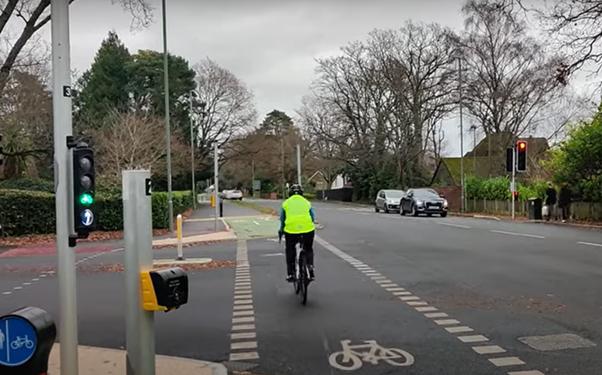


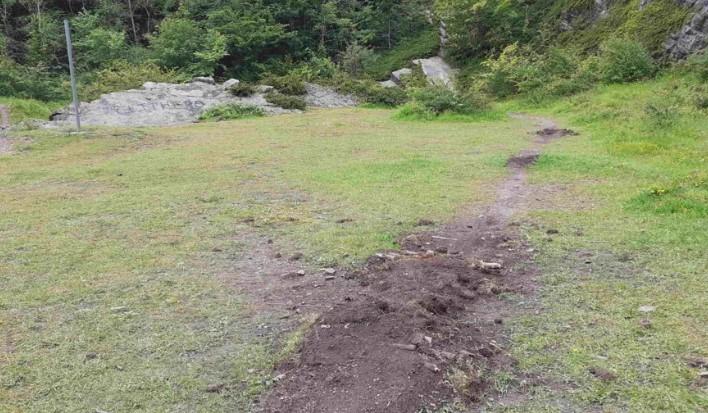


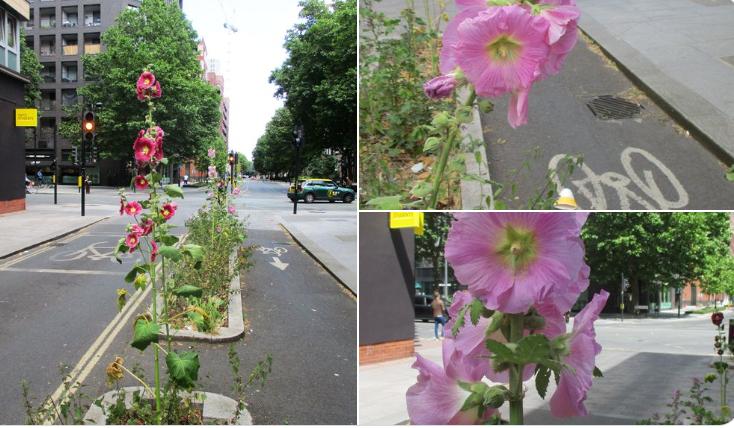

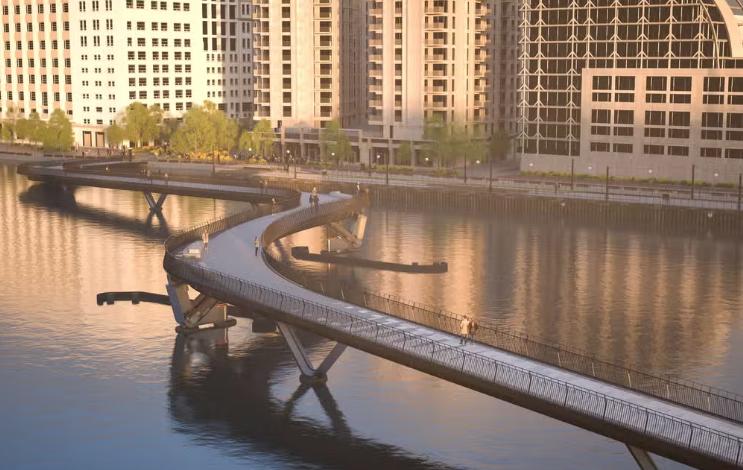

Add new comment
20 comments
£40m London cycling bridge plan under review amid fears project "may not even be deliverable" if costs increase
Does anyone know the phone number of the Dutch Transport Ministry?
Difficult as I can't find a "like" comparison eg. bridge of what looks like 200-300m across water with piers in water. I imagine the latter will likely push up costs considerably though other designs are available of course.
There's this one, 800m long (only 3.5m wide deck though...), construction finished 2021 - 6.5 million euros. Seems rather cheap but that's what it says.
This one is definitely on solid ground but another pier-supported bridge: 330 metre total, suspended part 190m, estimated to cost 2 million euros. Of course this one is more "functional"...
Monsieur Campenaerts, c'est un bidon, pas un bidet.
Though if you're using a bidet for that, you're doing it wrong too!
Wouldn't "fix things, so you can move fast" work better?
Hollyhocks are excellent. If sown from seed they establish themselves in year 1 and flower from year 2 onwards.
Re. "move fast and fix things" - the shifters need replacing on my bike - how soon can she make it round?
Could the bridge be cheaper if, y'know, they made it straight, perpendicular to the banks and therefore shorter?
You're welcome.
People proposing "form-over-function" bridges? In London? Can it be?
Building costly "extraordinary infra" - which isn't as functional as the humdrum versions - is of course a common thing (example from Copenhagen). In fact humans have always been tempted by building "wonders" where utility is at best secondary.
That would make the inclines steeper though if it needs to be a certain height in the middle
And there might not be an appropriate site directly opposite for the other end of it.
True, or ... perhaps the bends are also to slow those dangerous cyclists?
The site's designers do mention things like avoiding moorings and achieving clearance:
https://www.burohappold.com/projects/royal-victoria-dock-silvertown-bridge/
OTOH there are standard UK non-features like no separate marked space for pedestrians and cyclists (and not great width for both). Zero (possibler one, stationary?) cyclists in visualisations.
I think it's "pedestrian bridge" with "cyclist" added on a sticker.
Yes, but spare a thought for the poor architects!
It looks like it is shaped so that river traffic can go in a straight line beneath it. Note the black barriers in the water to stop boats crashing into the bridge supports. It is a lot easy to steer a bike around a tight bend than a boat under a bridge.
Note the black barriers in the water to stop boats crashing into the bridge supports
When you write 'stop'.... Don't forget the 'driverless cars smash into buildings' topic. Some of those undercover drivers are bound to have jobs steering boats! and that means £40 million going the way of the Road Traffic Offences Review and the Baltimore Bridge, while the helmsman simply claims a first epileptic fit and being unable to recall the incident.
The black barriers are indeed to provide a channel for boats running through but not, in general, to go beneath it, part of the bridge design is that the middle section will swing backwards to allow large boats to access the western end of the docks; some pretty sizable ones go through there, as you can see from the screenshot below from Streetview of a boat tied up to the west of the existing footbridge, that's why that footbridge had to be built so high with access at each end by stairs and lifts and is now so unsuitable for the new housing development. Quite why the council should bend over backwards to accommodate cruise liners and enormous private yachts, possibly the most polluting form of transport on Earth, is another question. Doubtless they have been told it makes economic sense but I would imagine that most passengers docking there will head straight to central London to spend their tourist dollars rather than sampling the delights of the borough of Newham.
"The Serpentine Bridge" - just to add a bit of confusion.
Such smugness.
Sickening innit.
Just a Domestique passing a bottle to the yellow jersey, nothing to see here